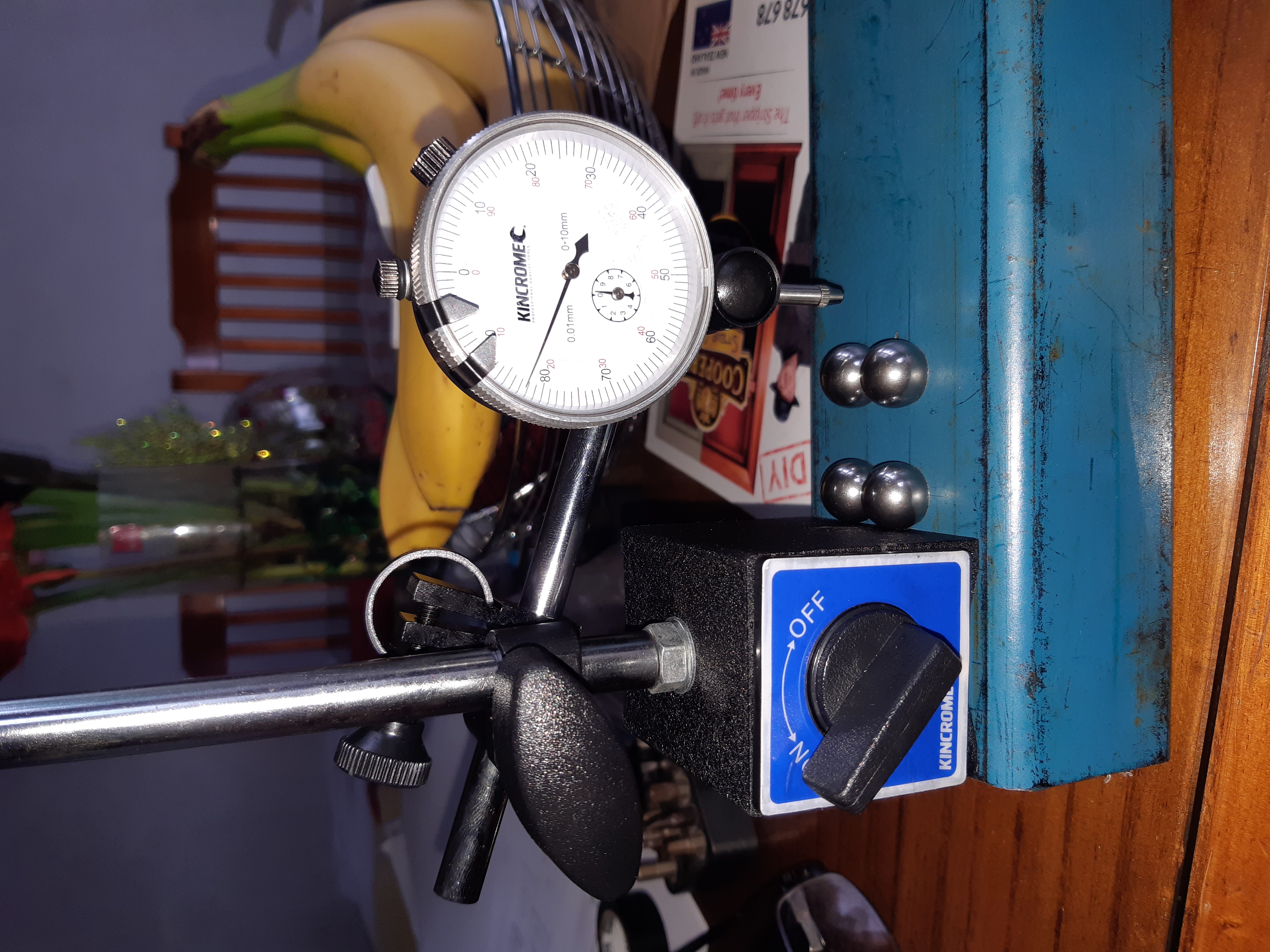Bloody 6mm Crudmore. After getting a "new to me" press and making sure I was using VLD type seating stems I'm still only getting 25mm groups @100M and I'm thinking its run-out related.
I built a gauge (pic coming) and my reloads still have around 4 thou run-out minimum. I've got a basic Redding seating die, a Hornady and a 6.5x47 Redding competion seaters, none of them deliver the goods . . . . so is it me and a technique issue with the long pointy 110 gn 6mm sierras or what??
Welcome guest, is this your first visit? Create Account now to join.
Welcome to the NZ Hunting and Shooting Forums.
Search Forums
User Tag List
+ Reply to Thread
Results 1 to 15 of 27
Thread: Fixing Run-out
Hybrid View
-
28-02-2021, 09:39 PM #1Member

- Join Date
- Jul 2012
- Location
- Invervegas
- Posts
- 5,647
Fixing Run-out
-
28-02-2021, 09:41 PM #2Member

- Join Date
- Jul 2012
- Location
- Invervegas
- Posts
- 5,647

-
28-02-2021, 10:05 PM #3Gone But Not Forgotten

- Join Date
- Feb 2014
- Location
- Taupo
- Posts
- 1,887
A few things. What resizing die are you using? Have you measured the neck run out of a resized case? How much are you resizing down the neck of your case? .002" below bullet diameter is plenty and .001" is usually enough tension for target shooting.
-
28-02-2021, 10:30 PM #4Member

- Join Date
- Dec 2014
- Location
- canterbury
- Posts
- 6,849
@Tentman you need to stop beating yourself up on this
Start shooting relics like me that you are just delighted to get the shots on the backing board !
It pays off too
-
28-02-2021, 10:33 PM #5Member

- Join Date
- Jul 2012
- Location
- Invervegas
- Posts
- 5,647
-
28-02-2021, 10:48 PM #6Member

- Join Date
- Dec 2014
- Location
- canterbury
- Posts
- 6,849
-
28-02-2021, 10:33 PM #7Member

- Join Date
- Jul 2012
- Location
- Invervegas
- Posts
- 5,647
A standard Hornady "New Dimension" size die. I just took 3 new Norma 6.5 cases, resized them to 6.0mm. They came out with an average of .04MM (0.0015 ??) runout on the neck. With projectiles seated using the conventional Redding die, the run-out on the projectile was 0.06mm for a Hornady 105, 0.04mm for a Nosler 100 and a whopping 0.14mm (thats 5.5 thou in imperial right??) for the Sierra 110. I'm seating everything a little bit, then turning 180 degrees for the final bit. Its gotta be something I'm doing . . . .
-
28-02-2021, 11:05 PM #8Gone But Not Forgotten

- Join Date
- Feb 2014
- Location
- Taupo
- Posts
- 1,887
-
01-03-2021, 12:30 AM #9
I made myself a runout gauge once too, batched ammo by runout from good to bad and went and shot groups.
Im not the best shot out there but I couldn't tell any difference from the bad to good runout ones so stopped worrying about it.
How consistent is your seating depth to ogive?"Hunting and fishing" fucking over licenced firearms owners since ages ago.
308Win One chambering to rule them all.
-
01-03-2021, 06:53 AM #10Member

- Join Date
- Jul 2012
- Location
- Invervegas
- Posts
- 5,647
I blame @Kiwi-Hunter - he started calling it "crudmore" and everything has gone downhill from there . . . .
-
01-03-2021, 12:36 PM #11
-
01-03-2021, 07:12 AM #12
Maybe it just doesnt like that projectile ?
Have you tried a few different seating depths?"Hunting and fishing" fucking over licenced firearms owners since ages ago.
308Win One chambering to rule them all.
-
01-03-2021, 07:41 AM #13Member

- Join Date
- Feb 2014
- Location
- Hawkes Bay
- Posts
- 2,703
It's too easy to blame runout for the so-so accuracy. As has been said, the projectile/load/powder just may not be the right one.
As for reducing runout, the simplest way is probably to use a std FL die with the expander ball removed and then run a neck mandrel through afterwards.
-
01-03-2021, 07:45 AM #14
I had trouble with runout using the Hornady New Dimension dies, think it was the expander mandrel from memory causing it. I switched to Redding and not had an issue since.
-
01-03-2021, 09:23 AM #15Member

- Join Date
- Jul 2018
- Location
- Auckland
- Posts
- 634
I know it might be controversial but for concentricity purposes maybe the Lee neck sizer.....
Similar Threads
-
Fixing a split deer head
By HG Man in forum TaxidermyReplies: 5Last Post: 15-09-2018, 04:07 PM -
Fixing E-Cat safe question
By mcdeee in forum Firearm SafetyReplies: 13Last Post: 07-03-2017, 08:09 AM -
Fixing requirements for E cat safe
By Shamus in forum Firearms, Optics and AccessoriesReplies: 25Last Post: 19-05-2014, 08:27 AM -
Fixing floppy forend
By Tuidog in forum Projects and Home BuildsReplies: 23Last Post: 11-09-2012, 01:04 PM
Tags for this Thread
Welcome to NZ Hunting and Shooting Forums! We see you're new here, or arn't logged in. Create an account, and Login for full access including our FREE BUY and SELL section Register NOW!!





 26Likes
26Likes LinkBack URL
LinkBack URL About LinkBacks
About LinkBacks



 Reply With Quote
Reply With Quote



Bookmarks